What Makes the Olmec Culture So Unique and Alluring?
The Olmecs were the first true Mesoamerican civilization. There were small villages and groups of people in the area in which the Olmec developed but these societies are referred to as Pre-Olmec. The Olmecs were a full-fledged civilization because they were more organized and socially advanced than their predecessors.
The Olmec Civilization’s Rise and Fall
There are differing opinions regarding the Olmec timeline. Some say the start was around 1500 BC, but the more popular timeline puts the beginning of the Olmec at roughly 1200 BC and the decline of the culture sometime near 400 BC. There are many theories about the downfall of the Olmec civilization such as catastrophic climate change, illness, volcanism, and overpopulation.

Simple Olmec timeline. (Author provided)
Basalt Heads
The most recognizable artifacts created by the Olmecs are 17 colossal basalt heads that have been discovered across four different sites. The Olmec gathered basalt from boulders located in the Sierra de los Tuxtlas. These stones were very large and it is unknown how they moved them to their final resting places.
The heads were shaped with percussion, hammerstones, and abrasives. The first archaeological investigations of the Olmecs didn’t begin until more than 75 years after the initial discovery of a colossal head. One of the first (and most famous) researchers to study the Olmec was Matthew Stirling.
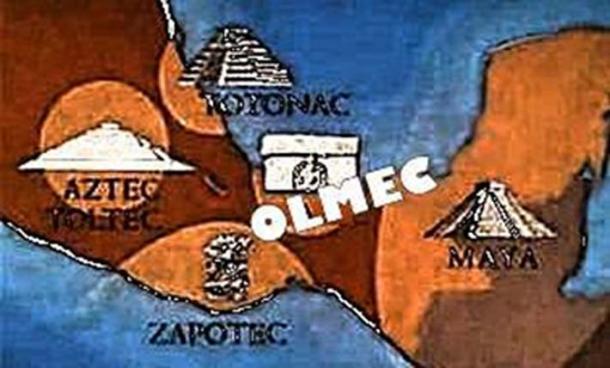
Olmec area of inhabitation. (Author provided)
The Olmec Culture was Unique
The Olmecs are unique for many reasons. It appears the Olmec culture developed alone. Most cultures develop with outside influences by engaging in activities such as trade and immigration. Developing independently is rare and when it happens the culture is known as ‘pristine’.
The Olmec had several firsts in the Americas. They developed the first monumental architecture and first signs of city planning. They were the first known people to use a writing system in the Americas. Another first was the use of chocolate, which was their preferred drink.
The name Olmec means “rubber people”. It’s how the Aztec tribes described the Olmecs and makes sense as they are the best candidates for inventing the first ball games.
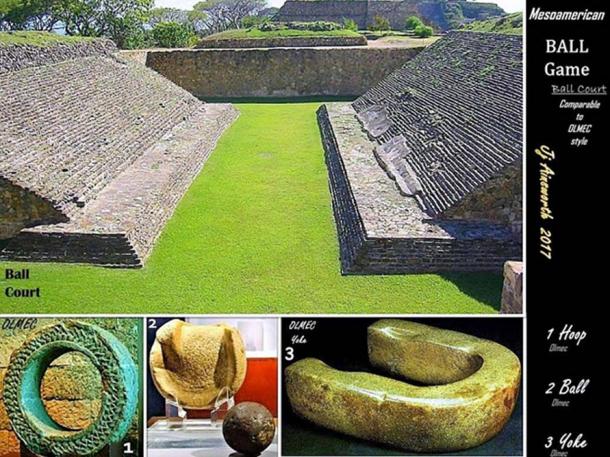
Mesoamerican Ball Game and Equipment (Author provided)
Evidence is not solely based upon Olmec influence at the oldest known ball courts, but also from several rubber balls discovered at a sacrificial bog called El Manati.

Omlec Yugitos. Although archaeologists know that these Yugitos were involved in the Mesoamerican ball games, it is uncertain how they were used. (Author provided)
The Olmecs are the earliest known civilization in the Americas to have used mathematics and had the concept of zero. The first calendar in long count format was discovered in the Olmec region of Tres Zapotes on the lower half of Stela C.
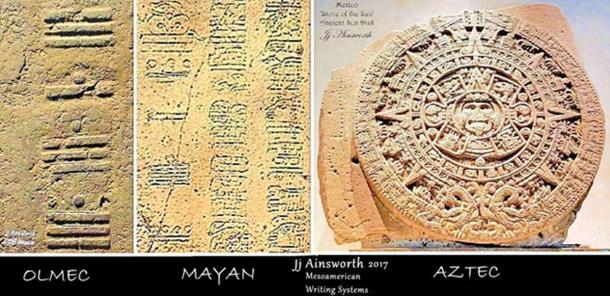
Olmec, Maya, and Aztec writing and calendar systems. (Author provided)
The Olmecs inhabited the area around the Gulf Coast of Mexico, now the modern states of Tabasco and Veracruz. They took advantage of the fertile land. Several large cities have been attributed to them, including San Lorenzo, La Venta, Tres Zapotes, Las Limas, and Laguna de los Cerros.
San Lorenzo
The first major city of the Olmec civilization was San Lorenzo, with a population of at least 15,000. It had a very elaborate drainage system that may have helped its success. The Olmecs achieved this feat by using carved stone pipes with lids. San Lorenzo had vast influence and political power in Mesoamerica. Ten amazing colossal heads were discovered there.
The colossal heads represented rulers or elites. They differ from one another in facial characteristics and size. Each was also carefully carved with a distinctive headdress. The largest head at the San Lorenzo is 9.3 ft. (2.8 meters) high, 6.9 ft. (2.1 meters) wide, and weighs about 25.3 tons. The San Lorenzo colossal heads were at the center of the site and formed two lines oriented north-south.
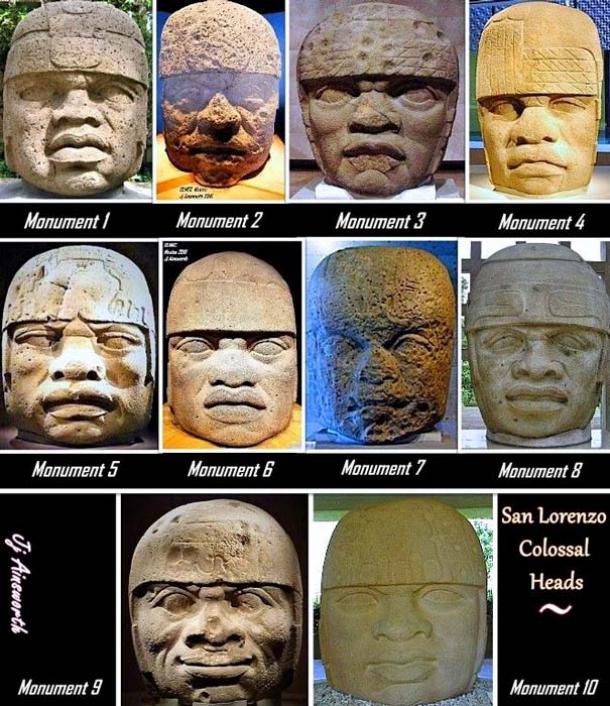
10 Colossal Heads from San Lorenzo. (Author provided)
Le Venta
La Venta came into prominence around 900 BC. It had thousands of inhabitants and was about 200 hectares; though the power and influence of the city spread much further. Many people there had jobs such in farming, fishing, and moving stone blocks from distant quarries. Traders also ventured into the distant valleys of Mexico and beyond, bringing back cacao, bright feathers, obsidian, and jadeite. Others were members of the priesthood and the elite or ruling class.
La Venta was built on top of a ridge along the Palma river. The royal compound existed at the very top. Four colossal heads were found at La Venta and three of the four were oriented in a line east-west. The placement of these monuments at both La Venta and San Lorenzo is very intriguing.
- Hidden in the Glyphs: Deciphering Bilingual Mayan-Olmec Text
- Possible sacred maize object found in stream at Olmec site
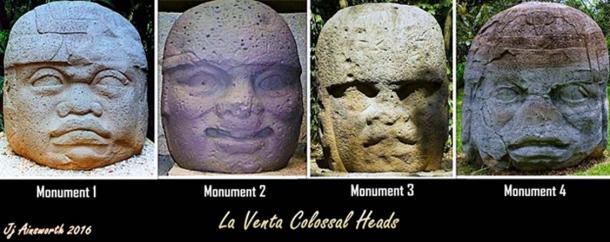
Four Colossal Heads from La Venta. (Author provided)
La Venta had a Great Pyramid, which is thought to have been an important ceremonial and political center. Building of the pyramid is estimated to have begun around 1200 BC. It was the largest Mesoamerican structure of its time. It is 110 feet (33.5 meters) tall, and contains approximately 100,000 cubic meters of earth fill. It has never been excavated and scans of the area show a few interesting anomalies. There are other structures underneath the city – offerings to the gods. These include more than 1,000 tons of polished serpentine blocks, more than 48 individual deposits of pottery, hematite mirrors, jade celts, and complex mosaics.
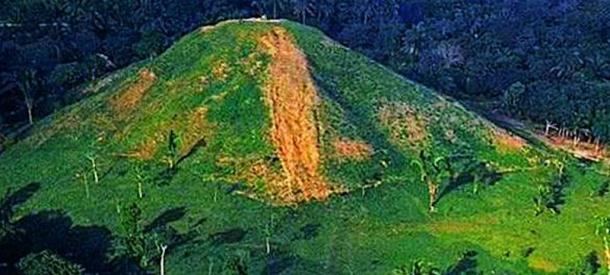
Great Pyramid at La Venta. (Author provided)
Tres Zapotes
Tres Zapotes is the third major city. In 1862, Jose Melgar discovered the first Olmec colossal head there. This led to the first archaeological explorations in the area five years later. The city’s unique because it may have been inhabited for more than 2,000 consecutive years. It also shows artistic influences from several other groups.
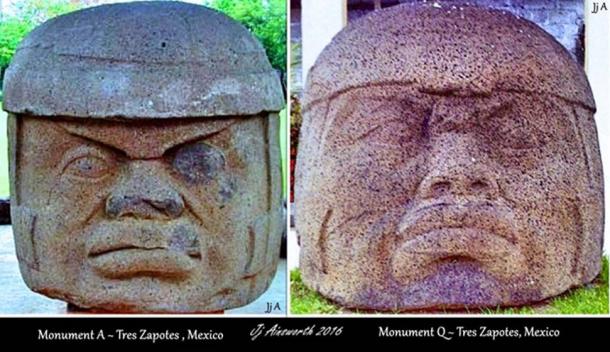
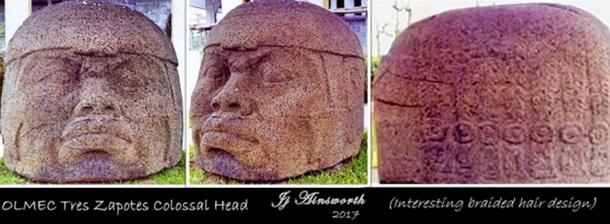
Colossal Heads – Tres Zapotes, Mexico – Monument A (top left) and Monument Q (top right and bottom). (Author provided) Monument Q demonstrates an interesting attribute in the form of braided hair. It is the only Olmec head that is shown with this style.
Tres Zapotes became prominent around the time that San Lorenzo Tenochtitlan declined. The decline of Olmec culture at Tres Zapotes occurred during the Middle Formative period, about 400 BC. This “decline” refers to the Olmec people losing unique cultural aspects. The city was not abandoned at this time, but became a mixed culture known today as the Epi-Olmec culture. Many believe that Epi-Olmec art, especially at Tres Zapotes, was less skilled. Less detail was used and lower quality items were produced.
La Cobata
La Cobata was not an inhabited city – it was a basalt site located near the Sierra de los Tuxtlas. An offering of an obsidian knife was found buried with the colossal head found there. The knife was pointed North toward Monument Q’s head. The head at La Cobata was discovered in 1970 and is the largest found so far. It is the only Olmec head discovered with closed eyes.
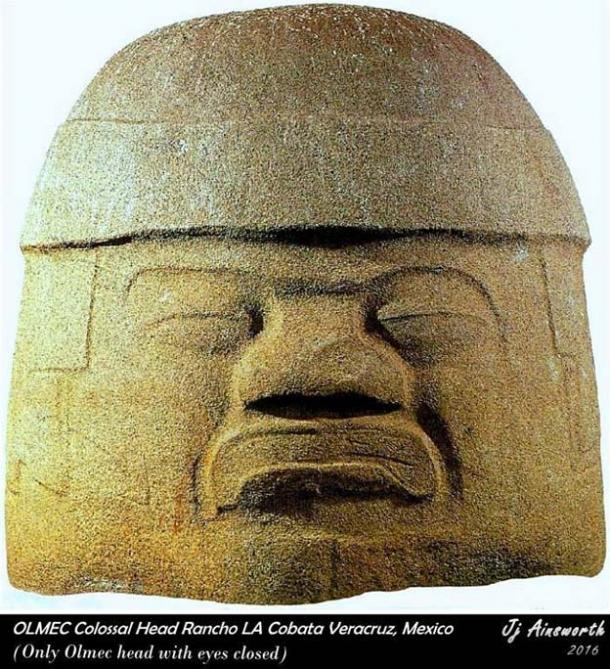
La Cobata colossal head. (Author provided)
Olmec Religion
Olmec religion spurs the interest and debates of many scholars. Some regard the Olmec religious hierarchy as complex, while others call it simplistic compared to the Maya and Aztec pantheons. I view it as both complex and simplistic. Complex because it showed ingenuity in rituals and beliefs set in place with no major outside influence, but simplistic when compared with the Maya and Aztec pantheons. The Maya worshipped over 250 deities and the Aztec had more than 1,000 gods!
Unfortunately, the identities of the Olmec gods have been lost to time. Because the Olmec language has yet to be deciphered, the only way to gain insight regarding their beliefs is by studying the images and symbols left behind on carvings and other artifacts. Information on who they worshiped and how they did so may change drastically in the future. But it appears the Olmec deities did not show gender, unlike the Aztec and Maya cultures that they ‘parented’.
Shamanism was a central part of Olmec religion and images of shamans transforming is often depicted in their art. Shamans are shown performing acrobatics, sometimes with were-jaguar attributes. It seems that the Olmec thought very highly of jaguars and admired their strength, stealth, and prowess. One of the highest states of being you could achieve would be the ability to become one with the powerful jaguar. Therefore, shamans were very important people in Olmec religion.
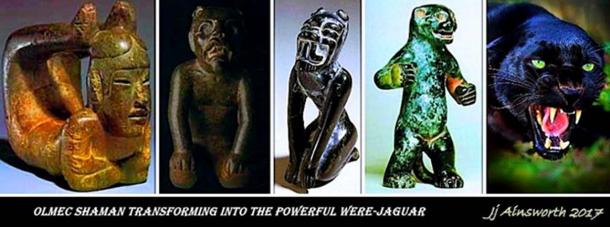
Shaman transforming into a Were-jaguar. (Author provided)
God I of the Olmec pantheon was the god of earth, sun, water, and fertility. and was also referred to as Earth Monster. It was sometimes depicted as a dragon with flaming eyebrows and a well-defined nose. This being’s connections suggest that it may have been a creator deity. It may also be the ancestor of the Maya Itazmna, Aztec Xiuhtecuhtli, and Mesoamerican god Huehueteotl.
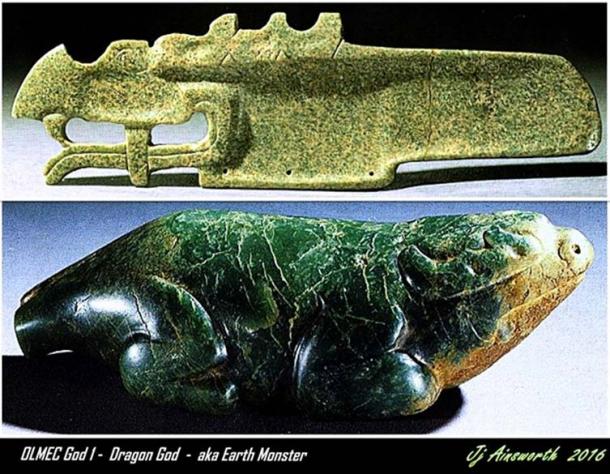
Olmec God I. (Author provided)
God II was the maize /corn god. It was usually depicted with a maize cob sprouting from a cleft in its head. Sometimes the being was shown as youthful or carved as a toothless infant. It had almond-shaped eyes, thick prominent lips, and a large flat nose. Carvings atop the heads of these statues were common. God II may have been the antecedent of all Mesoamerican corn deities.
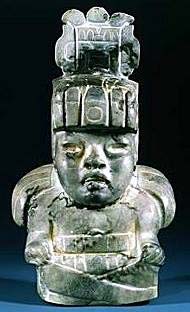
Olmec God II – Maize Deity. (Author provided)
God III was a cosmological deity sometimes referred to as a bird monster and was associated with the sun, sky, and agricultural fertility. It was usually portrayed in bird-monster form which combined reptilian and avian features. It sometimes had flaming eyebrows.
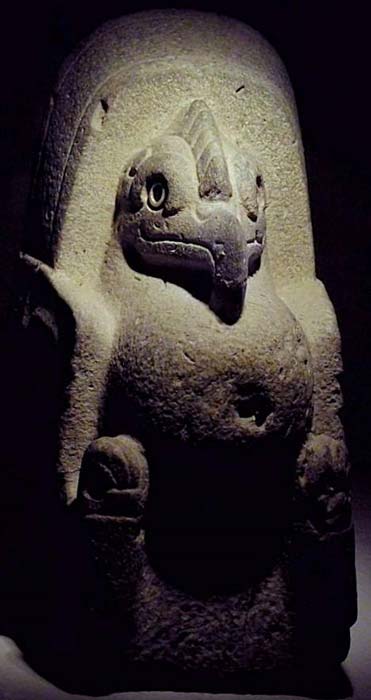
Olmec God III – Bird God aka Bird Monster. (Author provided)
God IV is the Olmec god of rain and was an agricultural fertility deity. It was depicted as a were-jaguar. Usually it was shown wearing a headband, pectoral badges, and ear ornaments. God IV has characteristics that suggest it was the predecessor of the Aztec Tlaloc and the Maya Chac.

Olmec God IV – Rain (Water) God. (Author provided)
God V is no longer a designation in the Olmec pantheon, but God VI represented spring and annual renewal. It was most often portrayed as a disembodied cleft head with almond-shaped eyes – one having a stripe across it. The name Banded-eye god is associated with this being. It was usually shown with a toothless, upturned grin. The only known depictions of this deity are in profile, usually carved on earthenware containers. In later years, the worship of this deity became rather hideous as priests would wear flayed human skins of sacrificial victims.

Olmec God VI – Banded-eye God. (Author provided)
God VII is a plumed or feathered serpent. It is the best known from the Olmec pantheon and was one of the earliest to have developed. Its counterparts include the Maya Kukulkan, and the Aztec Quetzalcoatl.
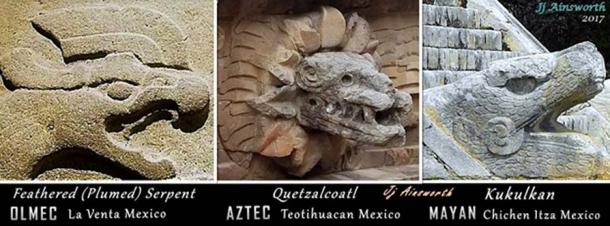
Feathered / Plumed Serpent transition over time from Olmec, to Aztec, to Maya. (Author provided)
God VIII was the Olmec fish god, sometimes called Fish Monster or Shark Monster. This being was associated with all bodies of water, from lakes to oceans. Its portrayed with crescent-shaped eyes, a somewhat human style nose, a small lower jaw, and a fish body. In fish form, it was sometimes depicted with a forked tail and a dorsal fin.
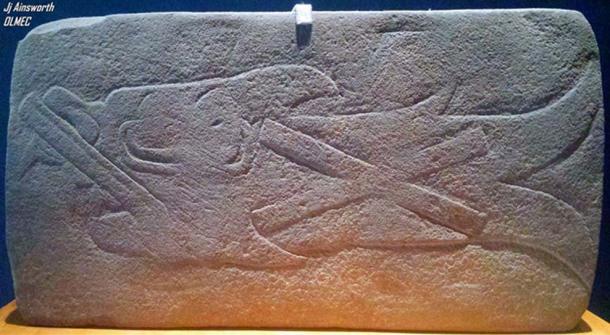
Olmec God VIII – Fish or Fish monster God. (Author provided)
God X is the last known god in the Olmec pantheon. It was a were-jaguar type being with the popular cleft head characteristic, a toothless mouth, and almond-shaped eyes. A definable motif of this god was the figure-eight symbol in its nostrils. This being was never shown wearing stripes or bands and was probably a lesser deity compared to the others in the Olmec pantheon.
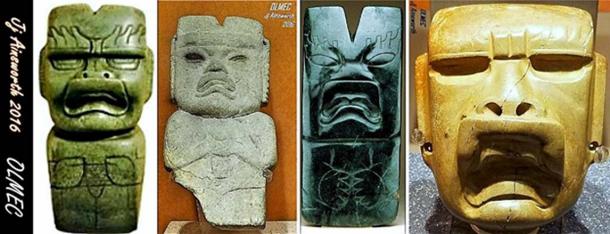
Related Post
A shocking documentary proves that mermaids do exist
SHOCKING Revelation: Thuya, Mother of Queen Tiye, Was the Grandmother of Akhenaten and Tutankhamun—What Ancient Egyptian Secrets Did She Leave Behind?
Breaking News: Astonishing Discoveries at Karahan Tepe Confirm an Extraterrestrial Civilization is Hiding on Earth, and NO ONE Knows!
Breaking News: Researchers FINALLY Discover U.S. Navy Flight 19 After 75 Years Lost in the Bermuda Triangle!
NASA’s Secret Investigation: Uncovering the Astonishing Mystery of the UFO Crash on the Mountain!
Explosive UFO Docs LEAKED: Startling Proof That Aliens Ruled Ancient Egypt!